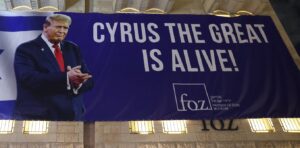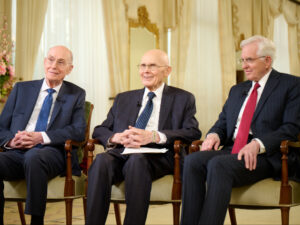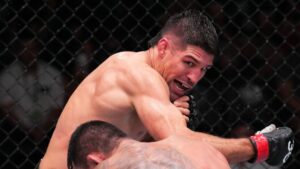Jean-François Poisson’s Netflix documentary Who Killed the Montreal Expos? examines the rise and downfall of Canada’s first major league baseball team.Ludovic Rolland-Marcotte/Courtesy of Netflix/Netflix
The Montreal Expos’ all-time starting lineup could be composed almost entirely of Hall of Famers. You’d have Larry Walker or Vladimir Guerrero in right field, Andre Dawson in centre, and Tim Raines in left.
Pedro Martinez would twirl his unhittable changeup to Gary Carter behind the plate.
The infield is a little chancier but any squad would be lucky to have Tim Wallach at third and Rusty Staub, le Grand Orange, at first.
For all the talent radiating from its rosters over the years, the franchise vanished in 2004, or rather was moved to Washington and reincarnated as the Nationals. Montreal hasn’t tasted professional baseball since.
Fans have been mourning Nos Amours ever since – and engaging in a two-decade-long murder mystery to find the culprit who put their team in the ground. Just as the Blue Jays captivate the rest of the country with their playoff run against the Seattle Marinersthe cold case has been reopened with a new Netflix documentary, Who Killed the Montreal Expos?directed by the Quebecker Jean-François Poisson.
The film serves as a capsule history of some of Quebec society’s most turbulent and traumatic years, and inadvertently suggests an answer to the titular question that Montrealers may not be happy to hear: rather than nefarious American businessmen or labour strife, the chaotic state of their city doomed the club.
The Expos arrived in 1969 at a time of unbounded optimism and self-esteem for Montreal. They were named, of course, after Expo 67, the wildly successful world’s fair that expressed the celebratory spirit of the country’s centenary and Quebec’s secularizing, nationalist Quiet Revolution. The city was on a high after glittering on the global stage.
The team’s first seasons in poky little Jarry Park Stadium were a popular, if not on-field, success. Montrealers had a deep history of loving baseball – their embrace of Jackie Robinson in his single season for the minor-league Royals was already legendary.
But having a major league team in a French-speaking metropolis was a new sort of thrill. Francophone broadcasters had to come up with a new baseball lexicon that included gems such as butterfly ball − or butterfly ball − for knuckleball.
Majority owner Charles Bronfman, an heir to the Seagram whisky fortune, hoped the Expos would help integrate Quebec into mainstream North American society and the early returns were promising.
Stills from Who Killed the Montreal Expos? The documentary serves as a capsule history of some of Quebec society’s most turbulent and traumatic years.Radio Canada/Courtesy of Netflix/Netflix
Then came October, 1970. The kidnapping and murder of Quebec’s deputy premier Pierre Laporte by the Front de liberation du Québec, and Pierre Trudeau’s subsequent use of the War Measures Act to round up separatists, threw the province into turmoil.
Because the Expos were terrible, they weren’t playing baseball in October, but the crisis launched an exodus of anglophones and English-language businesses from Quebec that only accelerated with the 1976 election of the sovereigntist Parti Québécois. Population and economic growth would stagnate for a generation. Bronfman’s election-eve rant about the PQ menace only soured parts of the francophone press and fanbase against the team.
Even worse was the inauguration that year of Olympic Stadium. Almost literally a white elephant, the cantilevered concrete mammoth was delivered hundreds of millions of dollars over budget, partly unfinished, and reeking of cronyism and engineering incompetence. Its tissue-thin artificial turf and cavernous dimensions made it particularly unsuitable for baseball.
Somehow, the late 70s and early 80s turned into a golden age for the Expos anyway. The team finally developed a generation of charismatic players who could contend for championships and even mostly fill their vast stadium, guys like Carter (The Kid), Dawson (The Hawk), and Raines (known simply as Rock). In 1981, they came within a game of making the World Series and ranked a healthy third out of 12 in National League attendance.
Unfortunately, that year’s playoff heartbreak was the closest the team would come to glory. The city’s debauched, coke-fuelled party scene drained the potential from several young stars. And while Bronfman is remembered mostly fondly by fans today, he was the first of several owners without the vision or nerve to properly invest in winning baseball.
Carter and Dawson were ignominiously shipped off or let go to save money, and basic improvements to the team’s facilities like extra padding on the outfield walls to protect against injuries were neglected. When the product on the field suffered, attendance slid and losses mounted.
The business climate in Quebec at the time was grim and even the province’s richest tycoons found it hard to think optimistically about the future or spend accordingly. When Bronfman sold the team in 1991, only an awkward consortium of institutional and private investors could scrape together the money.
Pedro Martínez in Who Killed the Montreal Expos?Ludovic Rolland-Marcotte/Courtesy of Netflix/Netflix
A bumper crop of draft picks and developmental projects – always a strong suit of the Expos – still managed to seize baseball’s best record in 1994. Then a players strike cancelled the season.
If that was bad luck, the fire sale of talent that followed was bad management. Walker, Marquis Grissom, and closer John Wetteland left for almost nothing and all thrived on their new teams. Fans disgusted by the strike and the roster’s evisceration could hardly be induced to come back to a crumbling Olympic Stadium.
Another independence referendum in 1995, and a PQ government determined to manage the economic fallout by slashing budgets, doomed a proposed new downtown ballpark. Premier Lucien Bouchard famously said he wouldn’t pay for a sports venue while he was closing hospitals.
In swooped the American businessman Jeffrey Loria, an enigmatic francophile with a shark smile. He soon swallowed the team whole from his local co-owners after some clever and ruthless manoeuvring that saw the best minds of Quebec Inc. thoroughly played by a jumped-up New York art collector.
By the time the team was taken over by Major League Baseball and relocated to D.C., empty swaths of seats at the Big O had become a defining image of the Expos’ decline. But Poisson’s film makes clear that if anyone was responsible for killing the franchise, it wasn’t the fans. When the team was competitive, the supporters turned up, and transformed their cold and alienating stadium into a space as joyous and quirky as the city itself, complete with ersatz Bavarian drinking songs.
Quebec society was simply not healthy enough to support a professional baseball team at the time. Politics were too turbulent and money too tight. The early 1980s to the early 2000s were a time of retrenchment and decline in Montreal.
If the MLB wanted to take another stab at implanting a franchise in the city today, the league would find a much more stable and self-confident place – and fans ready to rekindle their love affair with Nos Amours.
Source link




